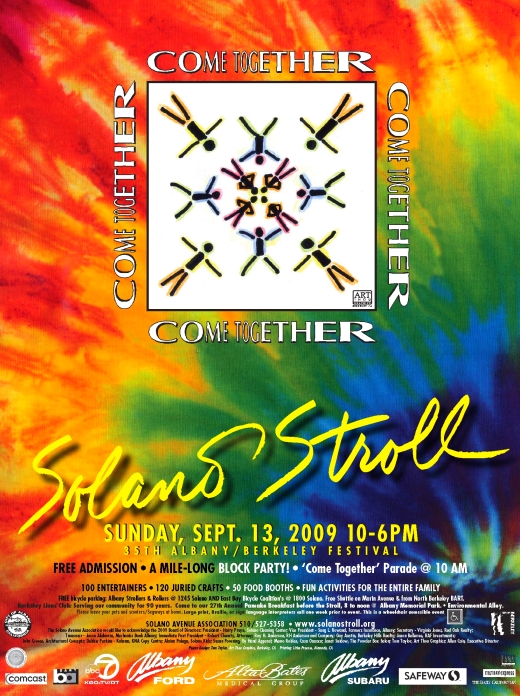We gave away 160+ CDs, 200+ flyers and 120+ cards. I completely lost track of the amount of people who stopped by the booth who already used Linux and just wanted to chat. We hope to a few events like this a year. Here are some pics from Vivek and Mark. Thanks everyone who participated or stopped by.
Author: jdeslip
Learn about Linux/OSS at the Solano Stroll
We will be manning an open source software / Linux booth at the Solano Stroll. The Stroll is a fantastic street festival in Berkeley/Albany on Solano Avenue with a lot of great food, entertainment and vendors. If you are in the area, come check it out and stop by to say hi and learn about free software. Look for us a couple blocks from San Pablo.
Linux Desktop Marketshare Continues to Rise
A few months back, I posted an article about Linux desktop marketshare passing 1% on NetApplications’ web statistics.
Using recent data from NetApplications, I have an updated the plot showing the marketshare hovering around 1%, and, in July, reaching a new high of 1.05%.

Again, NetApplications’ reports do not directly measure desktop marketshare; they measure the percentage of hits on a large collection of websites. This quantity depends on users with spoofed OS identity, depends on the websites included etc… The trend, however, unlike the actual number, is probably pretty robust.
W3Schools’ stats also have Linux reaching a new high in market share on their sites this month: 4.3%. Though, I tend to believe NetApplications’ numbers are closer to the true marketshare; it is nice that both stats agree on trend.
Ubuntu Under Attack on Multiple Fronts


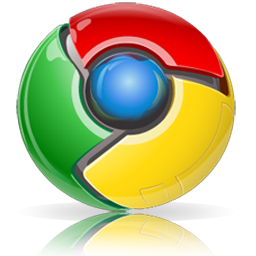
Over the past few years, Ubuntu has slowly emerged as the champion among Linux distros – having great application support, a huge and active community and having begun making major inroads in the netbook/laptop market through the deal with Dell, UNR / Easy-Peasy remix and through an announced effort to integrate with Moblin. The only other netbook competitor being the aged Windows XP, and other Linux distros. However, Ubuntu’s gains are now under attack on all fronts from some really big names in the computer industry. Ubuntu runs the risk of being squeezed out of its current spot in the tech and linux world.
From the right, we have Windows 7, which, if tech-pundits are to be believed, is better than Vista and quite capable on running on a netbook. What does Windows have that Ubuntu doesn’t? Since 90% + of people still use windows as their primary OS, there is a certain comfort level associated with the trademark. Add to this the fact that Microsoft has longstanding relationships with retailers, and I expect this to be the option we see most on store shelves. Canonical needs to start marketing if it expects to ever be more than hobbyist OS in this arena. They need to really push/emphasize their partnership with Dell and develop many similar relationships with other manufactures. People need to hear the Ubuntu name. Hopefully, this brings in some $ for Canoncial in the form of subscription services like Ubuntu-One (hopefully there is more to come) and other support services and maybe enterprise desktops soon.
On the left side, a couple months ago we started hearing about companies shipping netbooks with Google’s Android pre-installed. I just got a G1 phone with android and love it. Because it is Linux-based and open-source, it integrates well with the current Ubuntu Linux desktop through applications like Banshee and Amarok. It has a great app store with tons of useful programs. But, I am not really pleased to see it hitting netbooks. The problem? It is not at all clear if developer efforts to write netbook apps for android will be transferable into any benefit for the greater Linux eco-system because Android is not based on the typical X.org – GTK/QT model. Sure, some Ubuntu developers have gotten Android apps to run, but it is basically an emulation that the lacks the typical Linux look and feel. So, if Android becomes too popular on the netbook front it might just end up pulling resources away from the typical Linux distros like Ubuntu. What Ubuntu needs to do to stop the Android threat is implement an app store and implement it quick. Synaptic is basically 90% there already. They just need to quickly add a way to sell proprietary apps (something like click-n-run integration). Synaptics free-software repos with the addition of an app store that contains things like World of Goo, Cedega, Codeweavers etc.. would be amazing – and would take away one of Android’s biggest advantages.
Finally, if Android is attacking from the Left and Windows 7 from the right, just yesterday we got news that Google was sending a second attack right up the center. Google is not stopping with just one OS – they are creating a second Linux based OS designed for hardware from netbooks up to desktops centered around their Chrome browser. It is not clear exactly what Linux components this OS will have, but I hope, at least, that apps written for Chrome-OS will be natively supported by Ubuntu and vice versa (i.e. they use the same components like X.org / GTK/QT etc. that other distros can use). With the name recognition of Google, Chrome-OS could quickly divert a lot of attention away from Ubuntu and further fracture the Linux eco-system. It is too soon to tell how compatible Chrome-OS will be with other Linux distros. For now, let’s hope they become a good partner in the Linux world instead of a divider.
Edit: Works With U has a nice article about why Chrome-OS may be a good thing for Ubuntu: http://www.workswithu.com/2009/07/10/how-chrome-os-will-help-ubuntu/
BerkeleyLUG Programming Classes
We are beta testing the Programming Class idea that Phil came up with during the first meeting. Carl has volunteered to teach the first one on PERL as described in this forum thread: http://www.berkeleylug.com/?page_id=16&wpforumaction=viewtopic&t=15.0
The temporary time will be 3:30 pm directly after the next regular meeting on Sunday July 12. The location will either be to remain at Bobby G’s or move to nearby location on UCB campus (I am currently looking at available space). This timing/location will most likely not be a normal occurence. Please comment on the forum thread above if you plan on attending.
The Best Docks on the Linux Coast
Even Mark Shuttleworth is willing to admit that OSX has a pretty nice usable interface that is a good goal for desktop Linux to beat in the coming year or so. Even if you don’t want to replicate the mac, or if you think compiz is more useless than it is functional (how dare you!?), you might still be interested in replacing one of the two Gnome taskbars with a dock. Here is my dating history with the docks of Linux land:
AWN (Avant-Window-Navigator). This is the first dock I tried a couple years back. It looks good, is easily configurable, and has a lot of great plugins (stacks, menu’s, weather etc…). It can pretty much replace the entire gnome-panel in features. However, I only ended up sticking with AWN for a couple months because the auto-hide feature was (and still is) buggy and would crash the dock during normal operation. This should be fixed for the upcoming 0.4 release; so, I might have to give it another try at that time. The original developer works with Canonical on the Ubuntu Netbook Remix (which I love) and is definitely capable of great things.

Kiba Dock. I tried Kiba as a rebound for only two days after the AWN break up. Kiba has some great features including a pretty impressive physics engine. But, the dock was too crashy for my tastes. So, I moved on pretty quickly.

Cairo-Dock. This is the dock I ended up using for the longest period of time (so far, anyway, since I did eventually leave it). It is pretty rock solid performance wise (especially since the 2.0 release added OpenGL support). The downside is that it doesn’t really have a polished look. The default dock after installation is pretty hideous and obnoxiously busy. The configuration is a bit complicated, but if you take the effort, you can get a pretty nice looking/behaving dock out of CD. One of the nicest features is that plugins can be detached from the dock to act as compiz widgets. I left CD not so much because I was unhappy, but because I was more impressed with Gnome-Do’s offering.
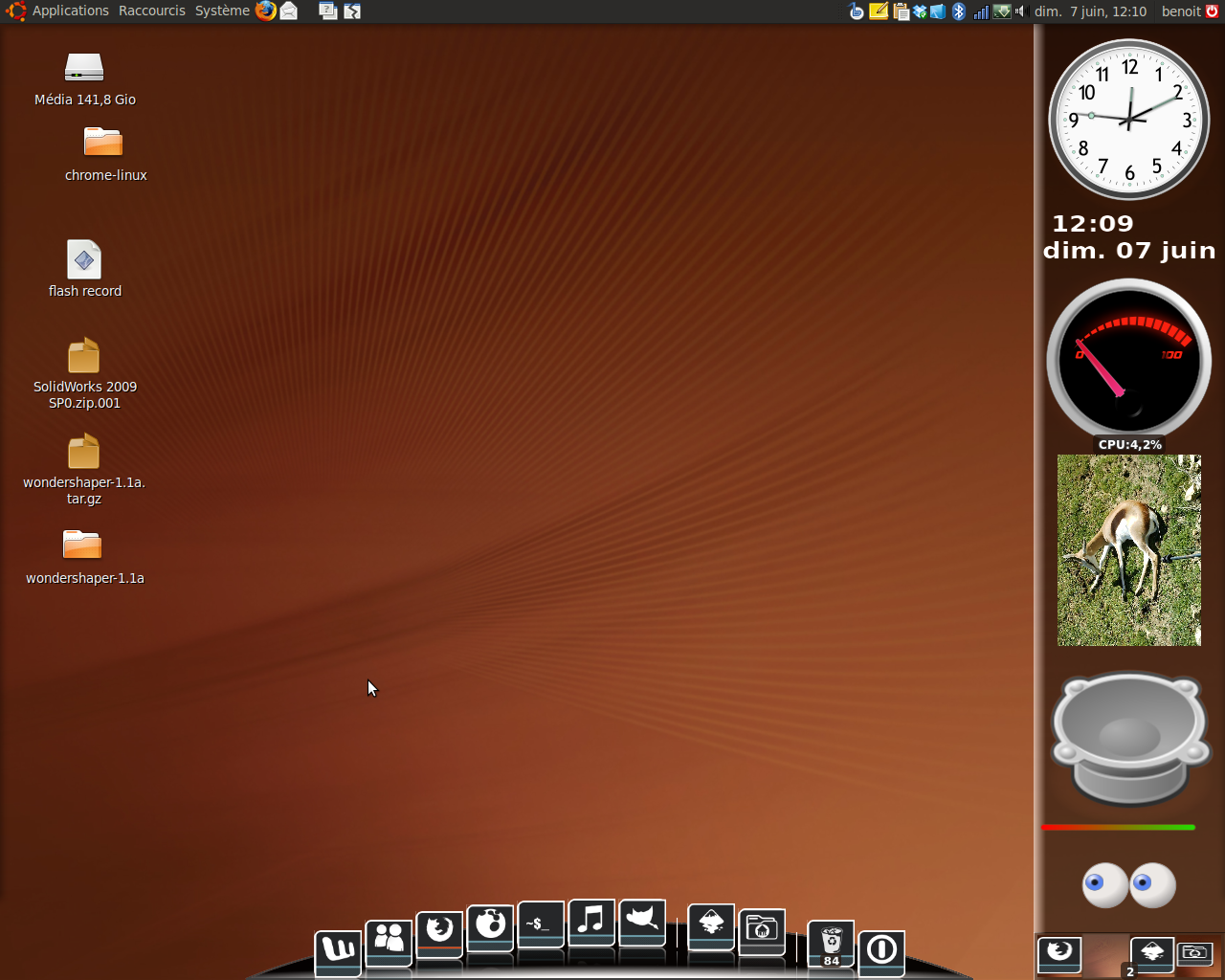
Docky. This is integrated as an optional Gnome-Do interface. It is simple, looks good and works extremely well. When you use Gnome-Do to search (actually Gnome-Do is much more than search), the dock is converted into a great looking search bar. I really like having one application that fills both of these needs. Auto-hide works well. Docky is what I have been using for the last couple months, but am I truly happy in this new relationship? Not quite. I wish there was an option to only show tasks from the current workspace, and I wish there were few more plugins (and the widget feature of CD).

Will a dock ever come installed as default in a popular Linux distro? It doesn’t look like it is coming anytime soon. But, I think Gnome-Do’s docky may have a good chance of making it into Ubuntu since David Siegel (Gnome-Do’s original creator – though not docky coder) is now working at Canonical.
(Images taken from respective project websites)
Pictures from Sunday’s Meeting
Here are some pictures Vivek took of the meeting on Sunday, June 14
The last one is from Warren at the last meeting in May.
New Linux Video Contest
Some of you may have heard of the Linux Foundations’ “We’re Linux” video contest.
There is a new contest out sponsored by Novell and the Linux Foundation. The topic is: “What do you do with Linux?” The top prizes are $2000, a laptop and a custom MP3 player. The deadline is July 1st. The entries so far are definitely beatable; any BerkeleyLUGers want to give it a try?

The Three Best Linux Media Centers
Let me first start off by saying that someone is likely going to be very angry at me for omitting program x, y, z or Miro. Please express that anger in the comments below. The three media centers I list are my favorites. All of them integrate easily with MythTV by adding a simple menu item, and each work greats with remotes and looks good on your TV. MythTV itself might qualify in this category. However, I find Myth makes a good OS (mythbuntu) and PVR (with a great web interface), but I think it is fairly awful at organizing your media and playing web vids. So, I leave it out of the media center category. I personally run a Mythbuntu system with the following three media centers installed on top of MythTV to organize my local media and watch web content.

This media center was designed for the original XBox hardware. However, it has since been ported to Linux, Apple and Windows (and other game systems). It has an extremely beautiful interface. XBMC indexes the music and videos on your hard drive or networked drives and plays them back with a lot of elegance. It is easy to configure your remote control and video playback utilizes VDPAU on nvidia cards. So, you get amazing performance during playback (HD video uses less than 10% of your CPU). Beyond playing back your media, XBMC has a ton of plugins (http://www.xbmczone.com/) that let you play online content like streaming video (ex. CBS), podcasts (ex. The Onion, Game Trailers), grab subtitles for movies etc… It has a MythTV frontend plugin which is great if you have a MythTV backend somewhere on your network like me – it is pretty new, though, and I find it a little clunky compared to a real MythTV frontend. The one killer plugin that is missing is a Hulu plugin, though. This is the main reason I spend more time in Boxee.
Benefits:
- Open Source
- Beautiful Interface (Though more complex than Boxee)
- Great Plugins
- Very Customizable
- MythTV Frontend
- DVD/CD Playback
Downsides:
- No Hulu Plugin
- Less Intuitive than Boxee
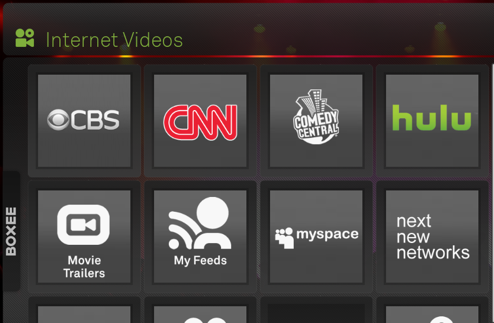
Boxee is media center that was broken off of XBMC. Basically it is XBMC plus a cleaned up interface, a social network and a few more key plugins. While much of Boxee is open source – these additions are closed source, which prevents XBMC from taking advantage of the Boxee developers work. This is pretty lame of the Boxee team, but they are trying to turn Boxee into a business; so, there you have it. The social network aspect of Boxee lets your friends see what you are watching/listening to and lets you recommend shows or songs to your followers. The main reason to use Boxee over XBMC is the Hulu app based on Mozilla (and a few other apps that are missing in XBMC). It is also generally a bit simpler to use. When I installed it on Ubuntu, my MCE remote immediately worked. Its media indexing system is not very good, however. Your files have to be named in a particular way because it does not read metadata, and even after this, it still fails to index a lot of my music. Apparently metadata indexing is coming in a future release – which should fix the problem. I also don’t like having to login to my username on each launch and there is no VDPAU playback yet. Overall, though, I spend more time in Boxee than either of the other two examples because it is clean and the plugins are awesome.
Benefits:
- Based on XBMC code – (So improvements there should eventually come to Boxee)
- Beautiful Easy Interface
- Great Plugins Capability
- Hulu Plugin in Particular
- DVD/CD Playback
Downsides:
- Not Very Customizable
- No MythFrontend
- Indexing Sucks
- Closed Source Chunks
- No VDPAU (Yet)
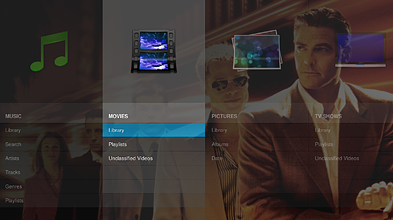
Moovida is an open-source media center from Fluendo the makers of the legal Linux gstreamer codecs. The interface is once again extremely beautiful and it works great with remotes once you get it working. However, I initially had trouble setting my MCE remote up. The indexing system on Moovida is the best of the three media centers on this list. So, if you just want to play back local media, this is probably your best choice. While there is a plugin system, only a few plugins have been written so far. And, there is currently no Mozilla or Hulu integration. I really haven’t used Moovida as much as XBMC or Boxee, but I am going to keep a close on eye on its development over the next little while to see if it gets more impressive addons.
Benefits:
- OpenSource
- Supported by a great company
- Beautiful Interface
- Best Media Indexer
Downsides:
- DVD Player Not Packaged By Default (Thanks Sed for pointing out they have one)
- Not Very Many Plugins Yet
- No Hulu Plugin in Particular
And there you have it. Try them out and set up a great media center.
HelpOSS Help You
 Bryan Lunduke of JupiterBroadcasting recently gave a talk where he laid down some tough love onto desktop Linux’s backside. One part in particular, really caught my attention. He claimed that Linux lacks some key programs (like video/audio editing tools) because such programs require a full time commitment from a small group of developers. A true full time commitment clearly requires monetary compensation: enough money coming in to support yourself, a family and at least one ridiculously big TV. While I can think of many counter examples, lots of key applications for Linux are indeed already supported by full time developers at corporations like Red Hat, IBM, Sun, Novell, Canonical. But, despite the contributions from such companies, other important applications for the Linux desktop are lacking because developers can’t find a means to support themselves on those projects. It seems clear, that we as desktop Linux users need to step up to support our developers.
Bryan Lunduke of JupiterBroadcasting recently gave a talk where he laid down some tough love onto desktop Linux’s backside. One part in particular, really caught my attention. He claimed that Linux lacks some key programs (like video/audio editing tools) because such programs require a full time commitment from a small group of developers. A true full time commitment clearly requires monetary compensation: enough money coming in to support yourself, a family and at least one ridiculously big TV. While I can think of many counter examples, lots of key applications for Linux are indeed already supported by full time developers at corporations like Red Hat, IBM, Sun, Novell, Canonical. But, despite the contributions from such companies, other important applications for the Linux desktop are lacking because developers can’t find a means to support themselves on those projects. It seems clear, that we as desktop Linux users need to step up to support our developers.
Why should we donate to software that is freely given away? There is a difference between between free as in open-source and free as in money. Linux and open-source software (OSS) is (and should be) about the former and not necessarily the latter. If we all take the money we have saved by not buying Windows, Office, Photoshop etc and donate just 10% of that sum to the open-source projects we care about most, we would be able fully fund a lot of great open-source developers.
Why haven’t I already given these projects money, if I feel this way? It’s true; I have never in my life paid for OSS (until recently), but I have paid for a lot of closed source software on Linux: VMWare, Mathematica, World of Goo. The main reason that I have given money to these closed projects and not to OSS, is that they make it easy to take your money. I.e, I don’t really even know how to give OSS money. What is needed is a clear way to give and organize contributions to developers of OSS projects. That is what I am proposing below.
But first an example: a couple weeks ago, I suggested to Chris at Jupiter Broadcasting that he add a donation button to the JB page. I now give a few bucks a month to JB, and in total, after just a few weeks, they currently receive over $200 a month. And, damn, they are just a podcast! I would give much more than that to X.org, MythTV, Canonical, Compiz etc… and I think many others would, too.
I propose we develop the following: a single central website devoted to funding OSS. I imagine it as place where developers can register their projects and a means to contribute (something like a paypal button), and users will come and donate to their favorite of those projects. It would awesome to integrate a sort of social networking site where you could get karma for contributing and projects could be ranked on popularity etc. This also creates a direct feedback between users and developers. If you don’t like the way development is going, you can stop contributing. If a new project pops up that you love, you can move your money to that project. If it were this easy and fun, I think we would see a lot of contributions from the Linux/OSS community.
So, I purchased the domain HelpOSS.com (mainly because I think the phrase ‘Help OSS Help You’ is witty). However, I have to admit that I don’t really know how to make a social networking site – my webpage/hosting experience is mainly in html and canned programs like WordPress or Joomla. Currently the site just has a bunch of links to projects I know of who take donations… So, I am hoping I can recruit some people here to help make this a reality. Who is with me??
Graphics from Tux Factory. Artist Symbiote.









